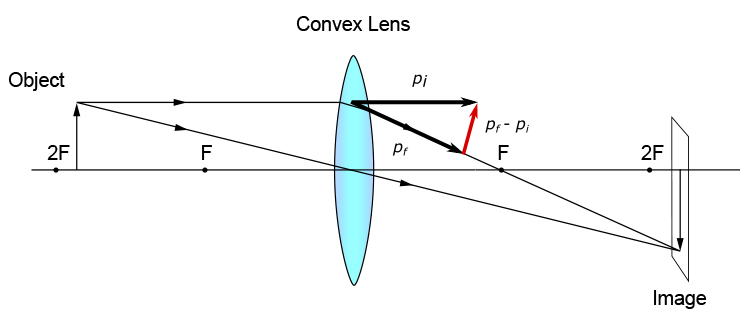When a ray passes through a lens, light is refracted and changes its momentum. In the case of an ideal lens (no absorption, flat) rays parallel to the optical axis pass through the focus and rays passing through the middle of the lens do not bend. The energy and magnitude of the momentum of the ray don't change, since we are dealing with an ideal lens, but the direction does. For the parallel ray, I imagine this should look something like that:
If we imagine the light ray as consisting of individual particles being reflected by a mirror, the mirror would be pushed in the direction of $p_f - p_i$. Also, the direction of this $\Delta p$ always has a component outwards away from the optical axis for a convex lens, since the problem can be symmetric around the axis. It seems this should lead to mechanical stress in a lens if the intensity of the light (=number $N$ of photons) is large enough. Of course, this momentum change is more or less also what is used to propel a solar sail.
Is this of practical consideration when designing (pulsed laser) optics and at what intensity (order of magnitude) would this rip a typical lens apart, if at all?

